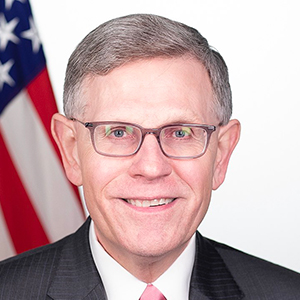Extreme weather events such as floods, high winds, lightning, and tornadoes are each year responsible for hundreds of deaths in the U.S. and countless cases of physical and mental injury. They disrupt life, pose threats to national security, and result in billions of dollars in losses. Although humans have long been fascinated by such dramatic weather, the first organized study of thunderstorms took place only in the late 1940s in Ohio and Florida.
Soon afterward, simple computer models were used to test theories of cloud and storm formation in one dimension. Throughout the decades, atmospheric models of increasing complexity and spatial fidelity were developed to forecast day-to-day weather, and to simulate the behavior of thunderstorms, ultimately in three dimensions including the tornadoes they sometimes spawn.

Dr. Kelvin K. Droegemeier,
University of Illinois Urbana-Champaign
Today, our understanding of severe storms, and ability to predict them using computer models, is nothing short of a miracle, for this was thought to be impossible 40 years ago. This presentation traces the evolution of storm prediction, the role played in it by fluid mechanics, and how artificial intelligence is now poised to open new vistas of capability. It concludes with a view toward running global Earth system models, which are used to project future climate, at extremely fine resolution so as to capture thunderstorms and other high-impact weather, and the potentially transformative impacts of such information on society.
Dr. Kelvin K. Droegemeier is Professor of Climate, Meteorology and Atmospheric Sciences and Special Advisor to the Chancellor for Science and Policy at the University of Illinois Urbana-Champaign. He previously spent 38 years on the faculty at the University of Oklahoma, where he served for nearly a decade as Vice President for Research.
He co-founded and directed one of the first 11 NSF Science and Technology Centers and co-founded an NSF Engineering Research Center. Droegemeier served as Oklahoma Cabinet Secretary for Science and Technology as well as two terms on the National Science Board, the last four years as Vice-Chairman. Most recently, he served as Director of The White House Office of Science and Technology Policy (OSTP), Science Advisor to the President, and Acting Director of NSF.
Dr. Droegemeier’s research interests lie in thunderstorm dynamics and predictability, variational data assimilation, mesoscale dynamics, computational fluid dynamics, massively parallel computing, and aviation weather. He is a Fellow of the American Meteorological Society and American Association for the Advancement of Science. In 2023, Droegemeier authored a book titled Demystifying the Academic Research Enterprise. Published open access by MIT Press and thus available for free, the book provides broad and deep insight into the research ecosystem for emerging and practicing scholars across all disciplines.